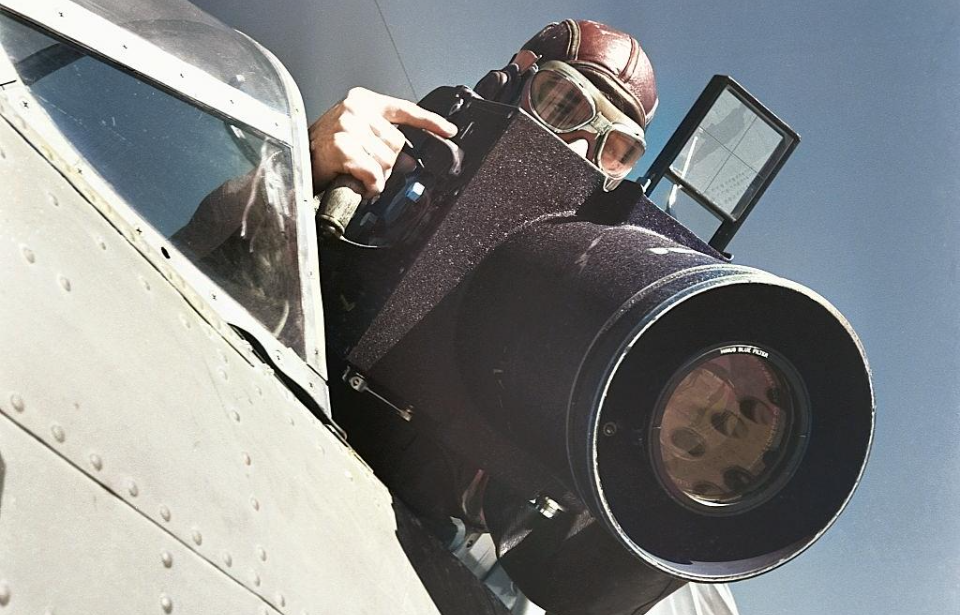It’s said a solitary image can express a thousand words, a sentiment that holds deep meaning, particularly during periods of war. These visuals possess a remarkable ability to encapsulate the essence of an event or an individual, providing a vivid snapshot of a fleeting moment.
Presented below are some of the most remarkable photos taken during the Second World War, ranging from explosive spectacles to poignant wrecks and everything in between.
Up in flames
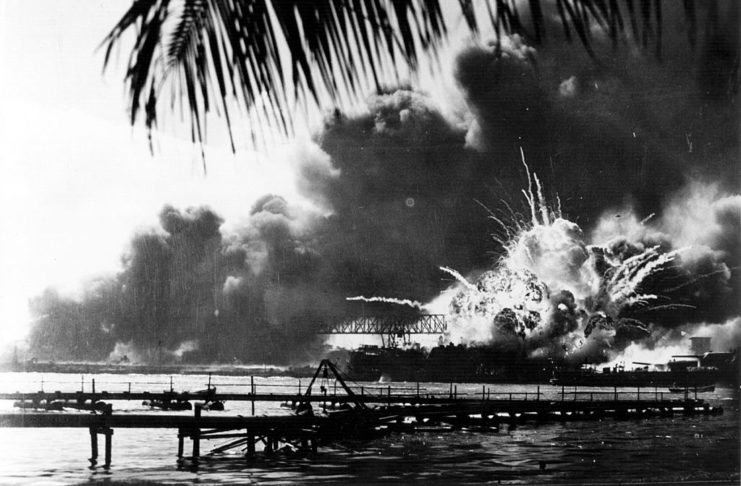
Our first photograph from the Second World War features the American destroyer USS Shaw (DD-373) after sustaining multiple bomb hits during the Japanese attack on Pearl Harbor. The image vividly captures the explosion of the vessel’s forward magazine, becoming one of the most iconic photos to emerge in the aftermath of the attack.
Remarkably, Shaw underwent repairs and went on to serve for the remainder of the war, providing escort duties for vessels traversing the Pacific.
Rescue mission
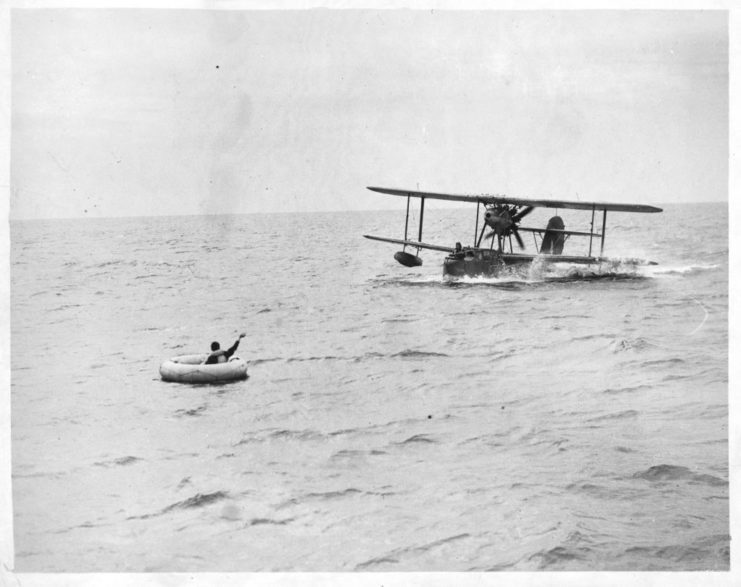
In 1942, a British pilot, downed and awaiting rescue on the open water, finds solace in an inflatable boat. Coming to his aid is a Supermarine Walrus rescue aircraft dispatched from the Air-Sea Rescue Service.
Utah Beach
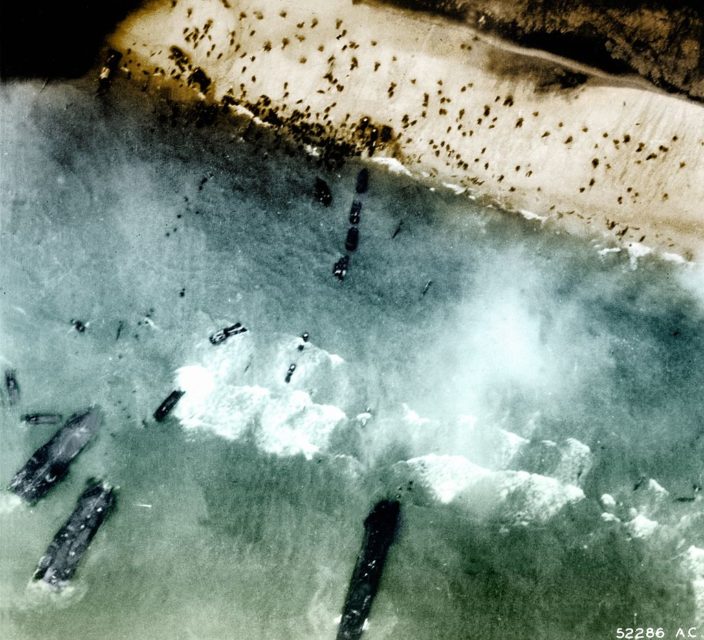
This photo from the Second World War features an aerial view of one of the landings to occur on D-Day. It shows the American forces landing on Utah Beach on June 6, 1944, primarily composed of the 4th Infantry Division and 70th Tank Battalion, who were supported by the 82nd and 101st Airborne Divisions who’d been dropped earlier in the day.
Charge!
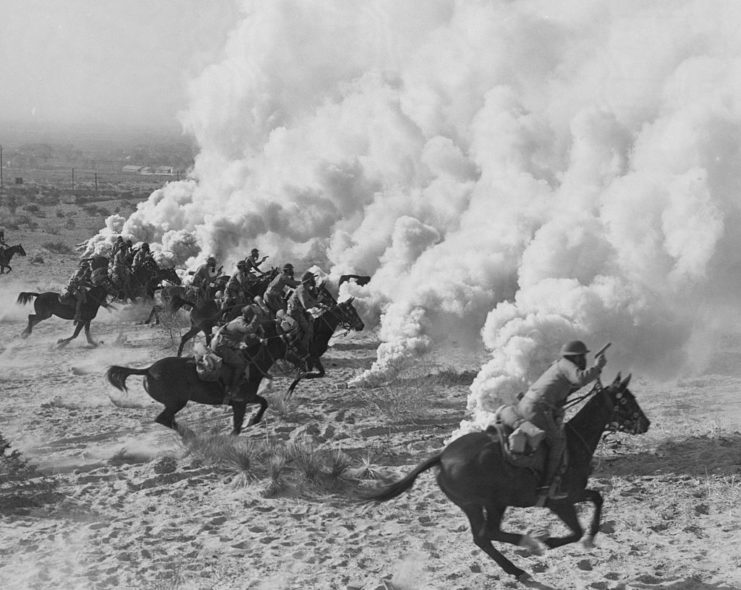
Despite their limited involvement in the Second World War, horses were still used by cavalrymen fighting in the North African Campaign, as this photo shows. What makes this image particularly wild is that, instead of swords, the soldiers are armed with handguns.
Spotted on the horizon
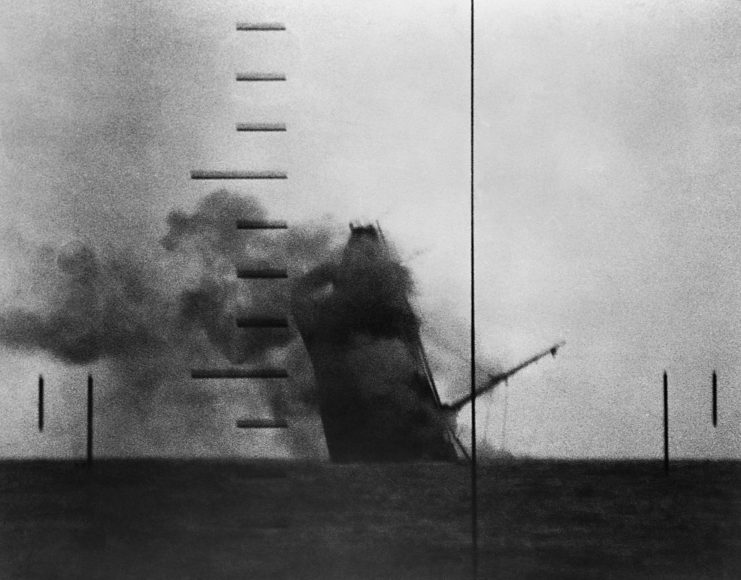
A photo taken through the periscope of the submarine USS Wahoo (SS-238) of the Japanese transport ship, Buyo Maru. The submersible had just struck the enemy vessel with one of her torpedoes, causing her to sink below the water. The incident occurred in the Pacific in 1942 while Wahoo was under the command of Lt. Cmdr. D.W. Morton.
Dogfight over London
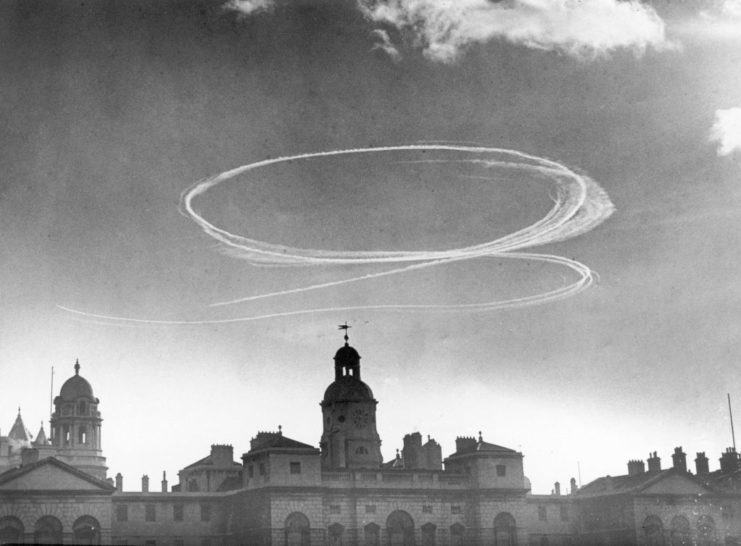
A daylight raid by the Germans launched on October 8, 1940 as part of the Blitz. Shown here are the smoke trails from British and German fighters as they engaged each other in dogfights over the city. The eight-month bombardment of London and major industrial areas in the United Kingdom killed an estimated 43,000 civilians, with tens of thousands more suffering injuries.
It’s a bird, it’s a plane…
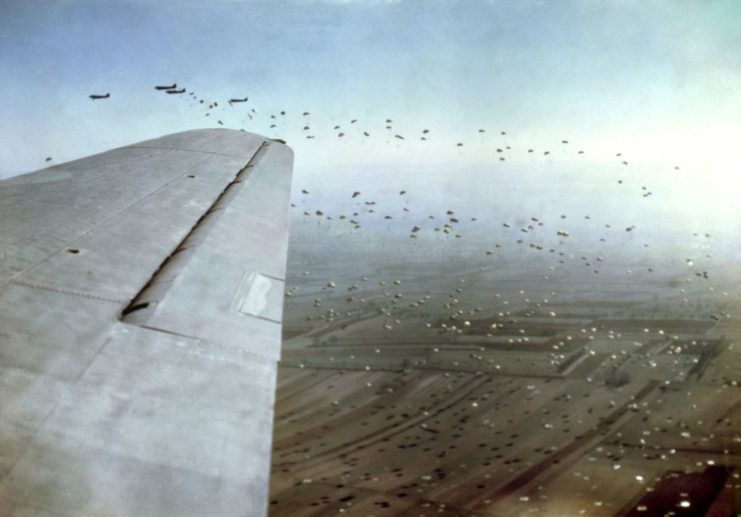
American paratroopers being dropped into combat during Operation Market Garden. This photo was taken from one of the aircraft that dropped the troops into the Netherlands. While the Allies had high hopes in the mission’s success, they wound up suffering a number of failures, which had deadly (and costly) consequences.
Bombing of Nagasaki
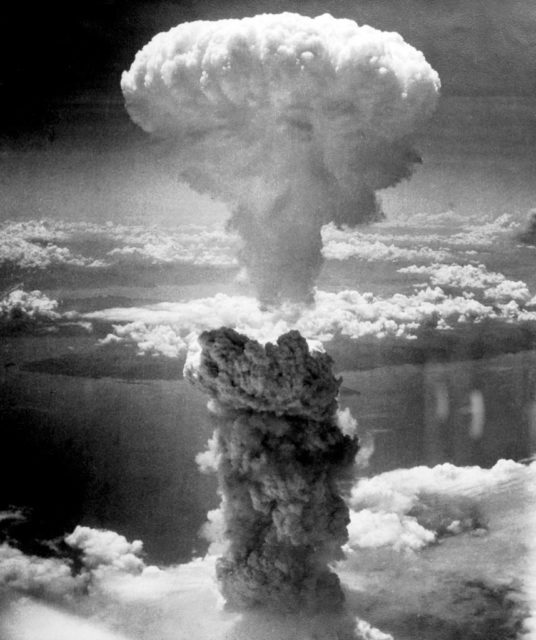
A colossal mushroom cloud ascends over Nagasaki, Japan, marking the fateful day of August 9, 1945, when the American forces released the atomic bomb known as Fat Man. This iconic photo, taken during the waning weeks of the Second World War, is the work of 1st Lt. Charles Levy, a member of the 393rd Bombardment Squadron, 509th Composite Group. With his personal camera in hand, he captured this image while soaring in a Boeing B-29 Superfortress.
The atomic bombings of Hiroshima and Nagasaki served as the pivotal events that precipitated the surrender of the Japanese Empire. In addition to causing extensive destruction, both detonations tragically claimed the lives of over 200,000 Japanese civilians, comprising 140,000 in Hiroshima and 74,000 in Nagasaki.
Head first
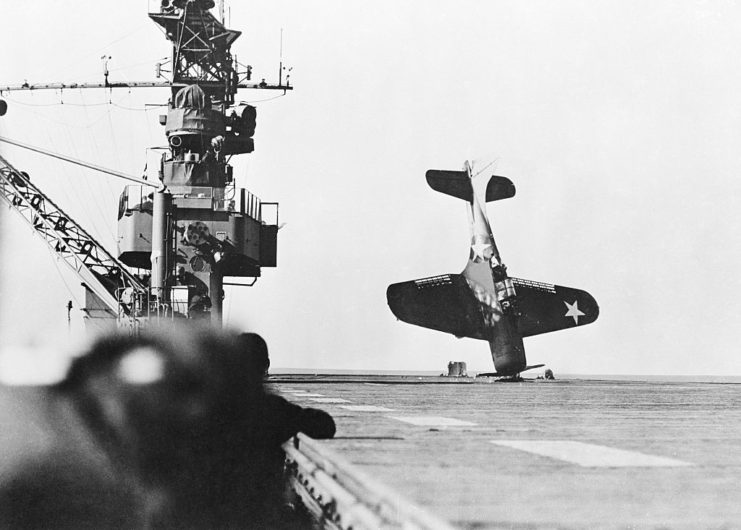
A Douglas SBD Dauntless “noses over” after landing on the deck of an American aircraft carrier following a test flight in 1943. Despite what it looks like, neither the pilot nor the gunner were injured.
A deadly fall
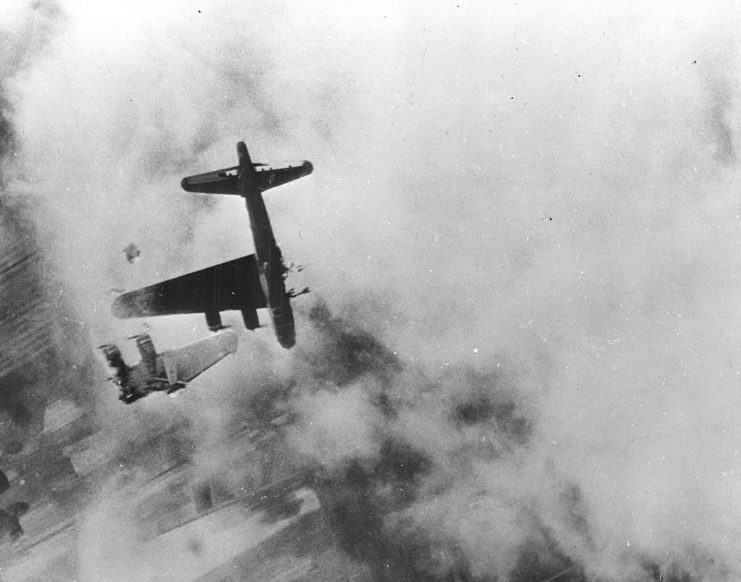
On April 10, 1945, the 322nd Bombardment Group (Medium), Eighth Air Force was sent to strike numerous aerodromes and ordnance depots north of Berlin, Germany. Struck by an 88 mm flak burst, one of the bombers, the Boeing B-17G Flying Fortress Wee Willie, lost its wing. Despite the disastrous hit, the overall mission is said to have been successful.
Don’t look up
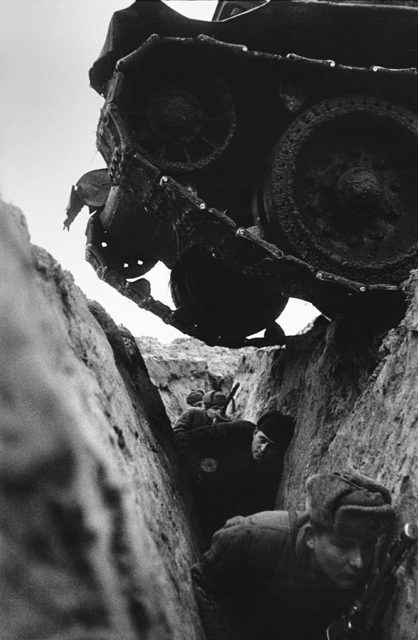
In this photo taken during the Battle of Kursk in 1943, Red Army soldiers hunker down in a trench. Over top of them is a T-34 tank, which is moving in to fight the German forces. One of the major offensives to occur on the Eastern Front during World War II, the over-one month battle ended in a Soviet victory.
Bombers in actions
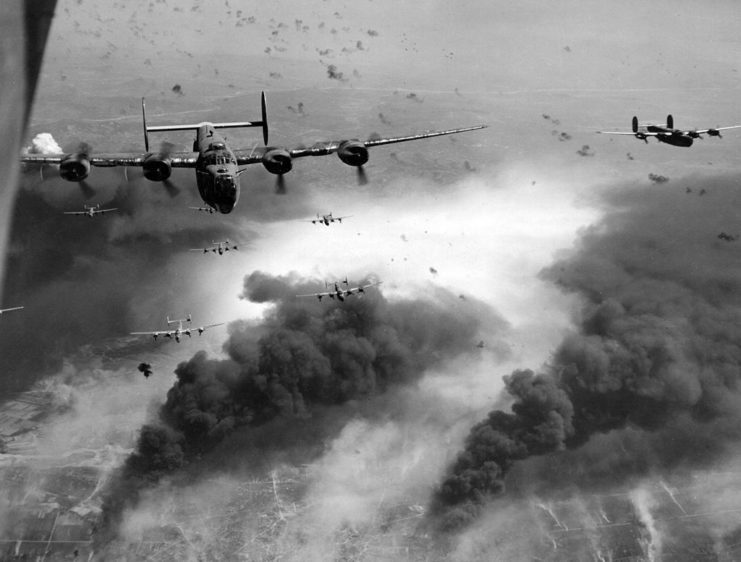
This is an aerial shot of numerous Consolidated B-24 Liberators being flown by the Fifteenth Air Force during a raid over Ploești, Romania in August 1944. They were tasked with attacking an oil refinery, which, if the clouds of smoke are anything to go by, was successful.
Attacking from all fronts
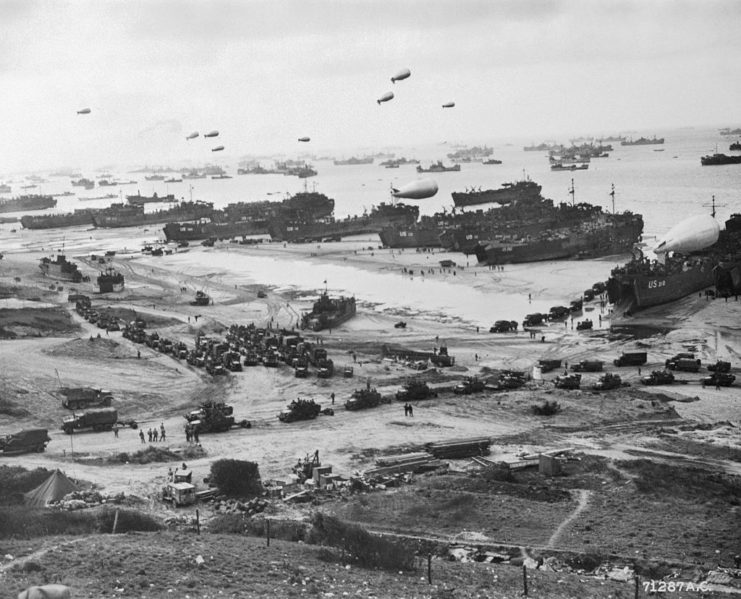
Aerial view of the Allied landings on D-Day. While it’s one thing to read about the sheer size of the operation, it’s another to see it in an image; it shows just how large it was. What’s more, the land, sea and aerial forces featured in this photo are just a small fraction of those involved in the Second World War’s largest amphibious invasion.
Watching her go down
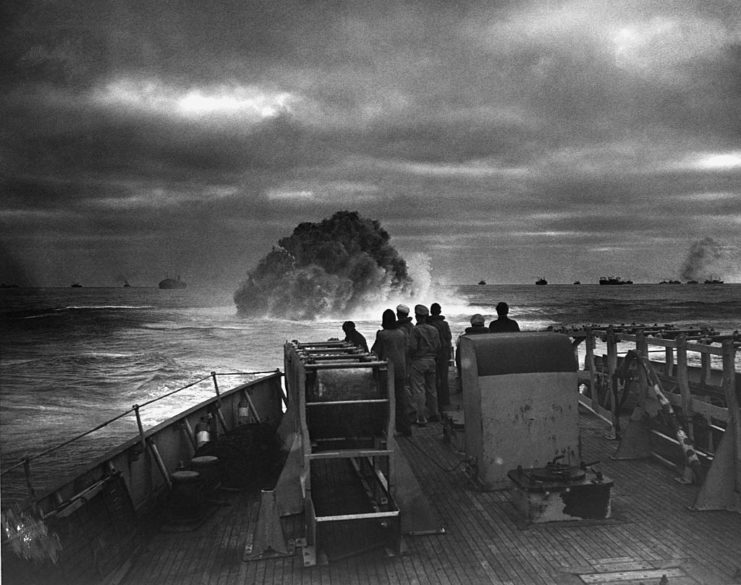
Members of the US Coast Guard watch from the deck of the USCGC Spencer (WPG-36) while a depth charge explodes in front of them. It was laid against German U-boats and was very successful at taking out the U-175 on April 17, 1943. Prior to being taken out by the Americans, U-175 had participated in three war patrols and sunk 10 merchant ships.
Is that a bus?
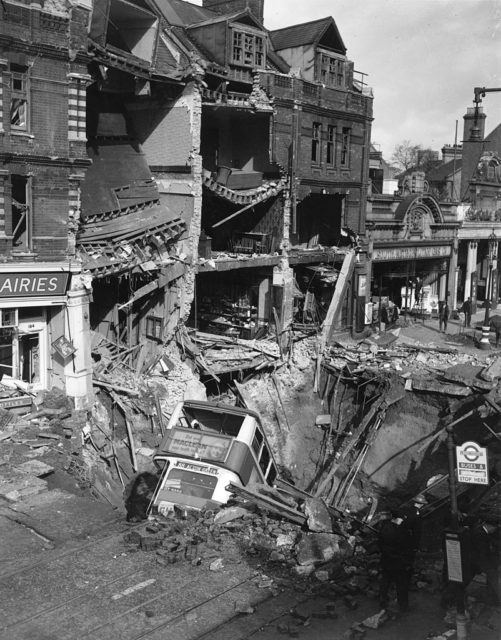
During a nighttime air raid on London during the Blitz, an entire bus wound up stuck in one of the bomb craters. Over the course of the operation, the Luftwaffe dropped over 100 tons of explosives over the UK.
A crater or two
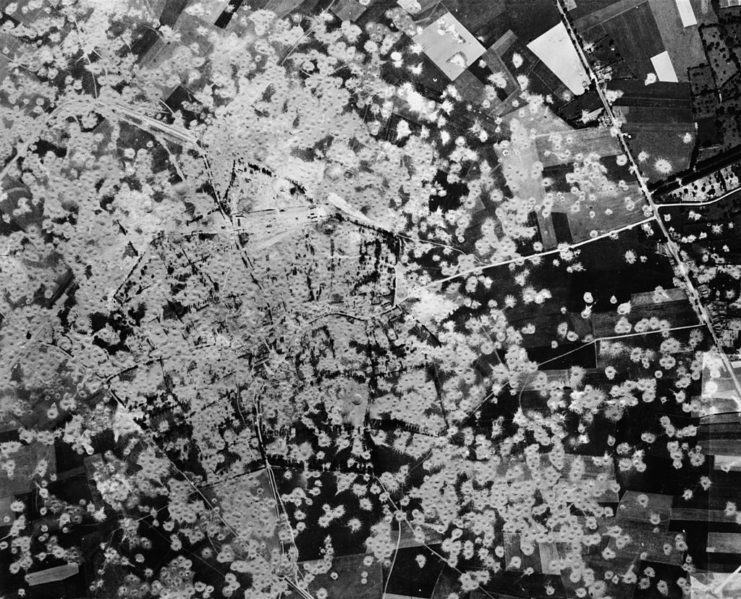
A reconnaissance photo taken by the Royal Air Force (RAF) Bomber Command of a bomb assemby and launch bunker in Siracourt, France. The intelligence was used to inform an attack launched in coordination with the US Army Air Forces on June 25, 1944.
This location was hit many times during the Second World War, hence the sheer number of bomb craters in the photo.
‘Fire-ing’ squad
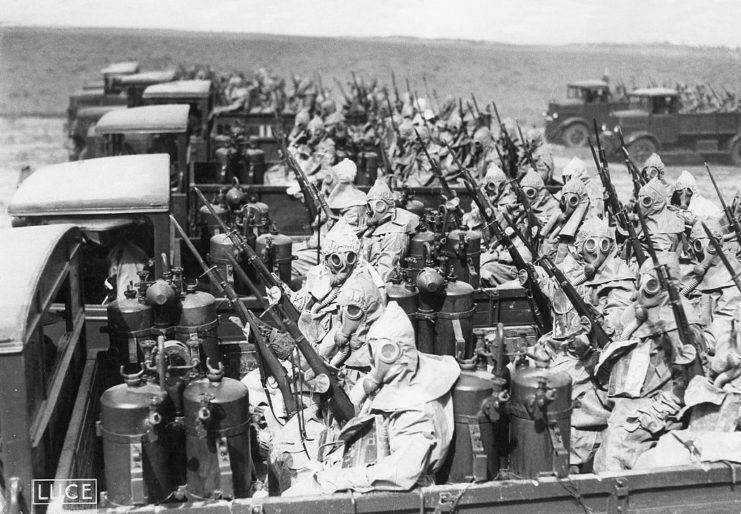
In Spring 1940, a unit of Italian soldiers equipped with flamethrowers were stationed near the Egyptian border. The weapons were extremely useful and used for a number of purposes. In particular, they saw use as a tactical siege weapon.
Better than horsepower
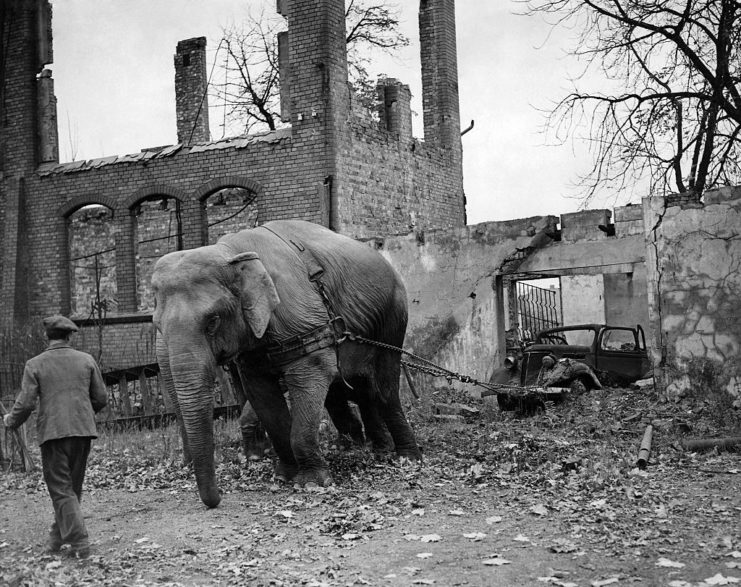
What do you do when you need to clean up the destruction caused by an aerial bombing? You enlist the help of local elephants, of course. Mary and Kieri are shown here helping to move a bombed vehicle in Hamburg, Germany in November 1945, just a few months after the end of the Second World War.
Into the spotlight
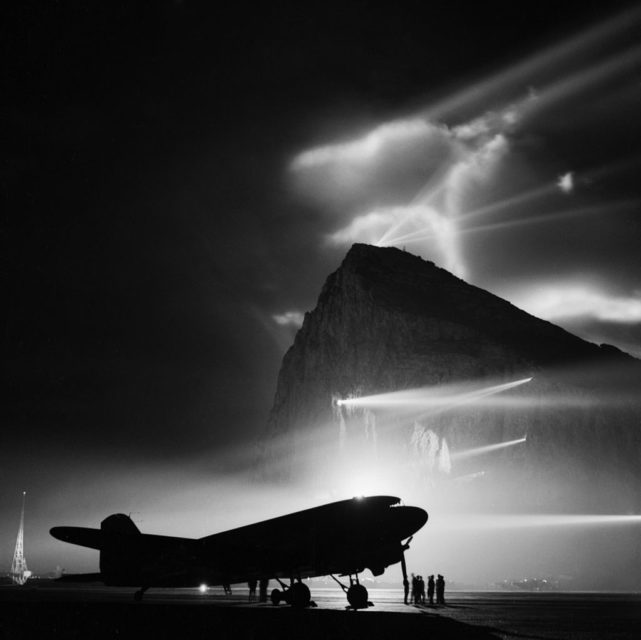
A Douglas C-47 Dakota with the British Overseas Airways Corporation silhouetted by searchlights on the island of Gibraltar while it prepares for a flight to the UK in 1943. Gibraltar was of crucial importance to the Allies and their fight in the Mediterranean. A series of tunnels were improved underneath the rock to use in case of an enemy attack. They, nor the servicemen chosen to man them, were ever needed.
Half an aircraft
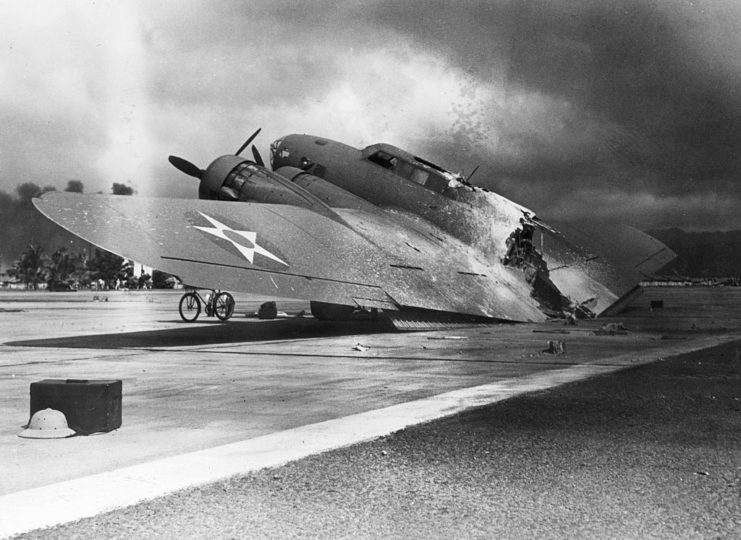
More from us: 33 Rare Photos of the Japanese Attack on Pearl Harbor
This Boeing B-17C Flying Fortress was damaged during the Japanese attack on Pearl Harbor. It subsequently lost its back end, leaving only the front. In this photo, it sits on the tarmac near Hangar Five at Hickam Field.
